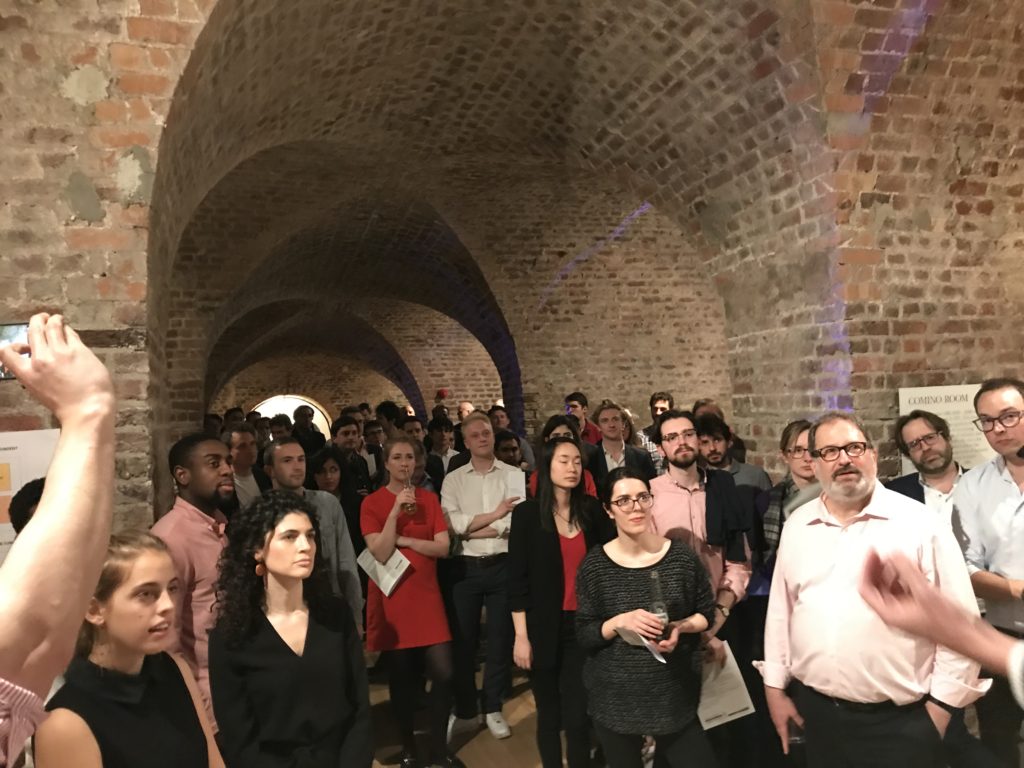Building networks to scale up carbon dioxide removal

[The views of guest post authors are their own. C2G2 does not necessarily endorse the opinions stated in guest posts. We do, however, encourage a constructive conversation involving multiple viewpoints and voices.]
The challenges of greenhouse gas emissions reductions makes it increasingly likely that, globally, large-scale greenhouse gas removal (GGR) from the atmosphere will also be required to avoid the worst impacts of climate change.[1]
Estimates of the scale of removal required vary but are substantial. The median estimate of CO2 removal from Bioenergy from CCS (BECCS) – often a proxy for CO2 removal technologies in general – across IPCC scenarios with a 66% chance or more of meeting the 1.5°C target – is 12 GtCO2 per year by 2100, with many models demanding much more.[2]
Currently, however, less than a few thousand tonnes of CO2 removal are being achieved internationally each year.
In my country, the UK, CO2 removal will be required in the range of 60-100 MtCO2 per year by 2050 to meet national climate change targets cost-effectively.[3] Currently there is effectively none.
Even with unprecedented compound annual growth, meeting the scale of CO2 removal required will be challenging,[4] and it is unlikely that traditional economic approaches are up to the task.
We can see that in spite of the economic evidence that sustainability programmes produce net economic benefit for cities, decisions are still not being made that transform energy use or urban transport systems. There is no reason to think that a simple appraisal of net economic benefits of CO2 removal technologies will fare any better.
We suggest that there is a need for an entirely different framing of the CO2 removal market creation challenge, one which takes its social legitimacy and commercial and civic viability very seriously.
Social legitimacy in large-scale CO2 Removal
With the exception of ocean sequestration, all CO2 removal technologies have to be deployed somewhere, and have to be retrofitted into communities and ecosystems.
Even in sparsely populated areas, landscape scale CO2 removal technologies will impact cultural and land use practice, and will have to gain grassroots support, as well as needing viable business models.
Substantial research and development, technology deployment support and market development policies are needed to stimulate CO2 removal along the whole value chain,[5] in a way that does not transgress sustainability limits, creating unintended detrimental environmental impacts.
In short, CO2 Removal must be economically viable, operate within sustainability limits and socially legitimate.

Carbon Removal Network Meetup, Feb 27 2019, The Royal Society of Arts
So how do we make this happen?
This question is what drove a group of colleagues and me to establish the Carbon Removal Network, to advance constructive dialogues and collective action in carbon across the UK, and potentially further afield.
We see the Carbon Removal Network interacting with other national and international processes by giving a more bottom-up perspective of the viability, feasibility and desirability for developing CO2 removal technologies and their associated value chains to allow the calibration of the scale at which they might be deployed at a national and international level.
Goals for a Carbon Removal Network
In short, we are seeking to enter an explicit dialogue with specific sections of society, to understand what type of CO2 removal business cases can be built, in which sector they could thrive, and what kind of societal legitimacy is needed to justify the inevitable support needed for taxation and subsidy.
This includes exploring how national and local sector regulation can be seen as procedurally just, how the business models proposed may affect existing rights and access of sectors of society, and where new regulatory or judicial structures may be required.
Key to this are questions of who governs the process, regulates its actors and creates the institutional ‘rules of the game’.
- What are the changes required to existing governance structures to allow for the diffusion of CO2 removal technologies and how can these changes be accepted as legitimate?
- What are the implications of CO2 removal technology development and value chain creation on present policy and future policy frameworks at a number of scales?
- How will procedural fairness and policy impacts affect the capacity for CO2 removal value chains to be optimised for carbon negativity?
These are all unanswered questions in the GGR space.
In order to answer them we need to work with networks across sectors, such as agriculture, food, and energy, to explore how retrofitting CO2 removal technologies will effect upstream production and downstream efficiency.
We also need to understand impacts on everyday users and affected communities.
Any questions that readers have regarding the work of the Carbon Removal Network – please feel free to reach out to Mark Workman on: [email protected]
[1] V.Masson-Delmotte et al., 2018 Global warming of 1.5C above pre-industrial levels and related global greenhouse gas emission pathways, in the context of strengthening the global response to the threat of climate change. 2018. IPCC, Geneva Switzerland.R
[2] Fajardy, M., Koberle, A., MacDowell, N., and Fantuzzi, A. 2019. BECCS deployment: a reality check. Grantham Institute Briefing Paper No 28 January 2019
[3] Committee on Climate Change. Reducing UK Emissions, 2018 Progress Report to Parliament June 2018.
[4] Royal Society and Royal Academy of Engineering 2018. Greenhouse Gas Removal pp 136.
[5] BEIS, 2017. Clean Growth Strategy

Interesting initiative, Mark. Perspectives is involved in / starting a research project with Malardalen University to explore possibilities for CDR policy instruments and funding opportunities in the international realm. Let’s keep in touch on this…
Thank you Matthias.
The Carbon Removal Network would only be too happy to stay in touch regarding CDR policy instruments and funding opportunities. We would be particularly interested in initiatives which create shared value and a dialogue around the development of CDR which was culturally adaptable to different contexts.
Thank you Matthias,
The Carbon Removal Network would be very interested in any initiatives to explore possibilities for CDR policy instruments and funding. We would be particularly interested in initiatives which created shared value and allowed a dialogue around the development of CDR which would be adaptable to specific contexts.